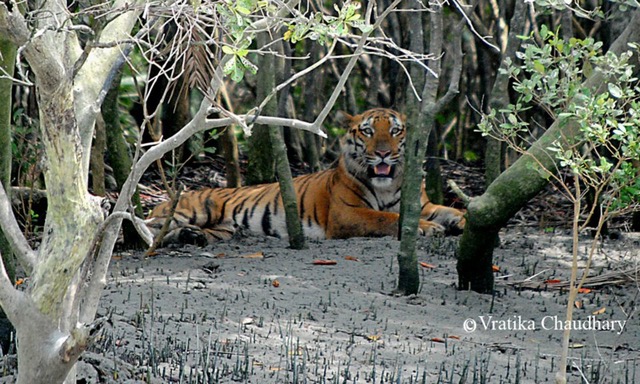
Vratika Chaudhary is pursuing her PhD at the University of Florida. She is working on a research project at the Pakke Tiger Reserve (PTR) in northeastern India. Her goal is to fill critical data gaps needed for science-based management of carnivores in the Pakke Tiger Reserve and community-owned forests. Her data collection techniques will include non-invasive camera trap surveys and questionnaires.
Vratika is also one of SCB’s 2017 Graduate Student Research Fellowship award winners. This award supports field work, including travel, materials or equipment, required to conduct research by graduate student members.
It is thanks to our members that SCB can support students doing such important work to advance the science and practice of conserving Earth’s biodiversity.
SCB held a Q&A with Vratika to learn more about her research, what inspires her, and what led her to study conservation biology.
What have been your biggest challenges in your research project with the Pakke Tiger Reserve so far?
I have started the collaborations with the forest department after pilot field work, and I plan to start my field work in August 2018. The field site is extremely remote with minimal network or other connectivity, which may be challenging at time.
What has surprised you the most?
The dedication of Pakke Forest Department towards conservation in their region. It was a very pleasant surprise.
How did you choose to do this research project in particular?
India is losing its biodiversity at an alarming rate due to high human population density and rapidly growing economy which requires rampant infrastructure development. This development comes at the cost of forested areas which are being transitioned for human use as local communities depend on forests for food, firewood and livestock grazing and rampant infrastructure and industrial development leads to habitat loss and fragmentation. Protected have been the cornerstone for conservation efforts in India, even though they constitute a mere 4% of Indian landscape. This threat is especially true for north east India, which has been away from the spotlight of rampant development.
The new wave of infrastructure development that is targeting NE India could lead to destruction of important habitat areas of species such as clouded leopards, marbled cats, Asian golden cat. This is especially dangerous when information about this species barely exists and we might end destroying their habitat without even realizing what’s important for them. I chose this project to make a case for protection of important habitats for these elusive species for which global collective knowledge is negligible.

What comes next? What do you hope this study results in?
I hope to expand this project outside of PTR and in the entire Kameng Protected Area Complex along with community owned forests. I am strong believer of technology transfer to wildlife conservation. I would want to expand this project to lead a semi-automatized citizen science wildlife monitoring protocol, in order to make a case for better conservation and protection in this extremely important landscape.
Where could we find you on any given Saturday? What do you like to do for fun?
At this stage in grad career, you would find me trying to get more work done, and finishing off tasks that I couldn’t finish during the work. I also try to take weekends to broaden my skill-set, reading papers out of my field, and learning some new tricks and tips of data analysis.
I reconnect with my family on weekends, who are the most important people in my life and unfortunately I don’t get enough time with them. I do get out and camp with my friends on and off, we go out for hikes on a nice bright day in Florida.
What are three things you always carry with you when in the field?
Compass (GPS is cool, but a compass and paper map will always help), water container, and an emergency energy bar.

Why did you decide to study conservation biology? What was your path that led you here?
Funny story, I am a dentist and when I was finishing up my training, and was doing residency- I got a chance to set up oral health camps in Sunderbans in West Bengal, India. I got to know about human-tiger conflict and got so engrossed in the plight of biodiversity that I could not look back. I decided to take up higher education in Conservation Biology and that is where I am right now. I do miss dentistry though.
What do you love most about what you do?
Solving puzzles of nature, I personally acknowledge the dwarfness of our limited understanding in extremely dynamic puzzles of nature. However, I enjoy the joy, peace, calmness and happiness it brings me to observe, understand and decipher the patterns and processes on natures that we are part of. Also baby animals and their photos in camera traps.
Who’s the scientist you admire the most? Why?
Dr. James Nichols of USGS Patuxent Wildlife Research Centre, I admire him because of his efforts in making adaptive management framework mainstream. And also his efforts in bringing statistical knowledge and ecology together to make better conservation management decision. He is a wonderful teacher and very humble scientist.